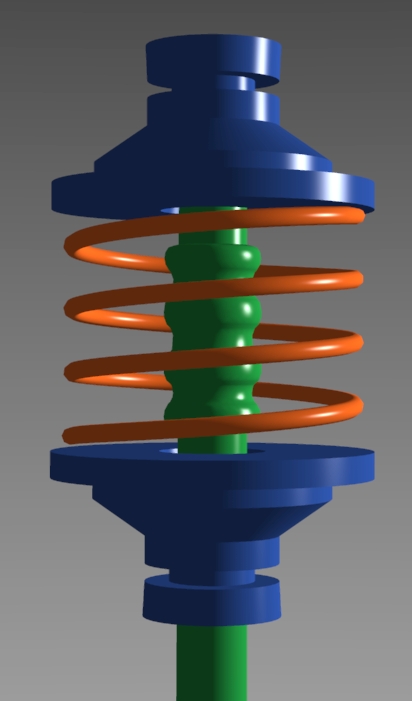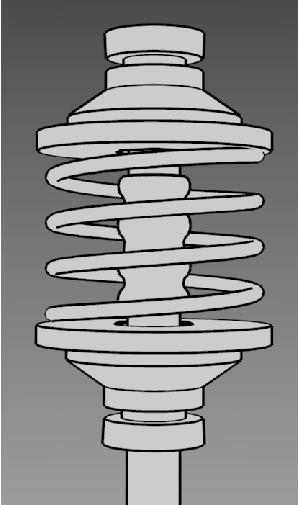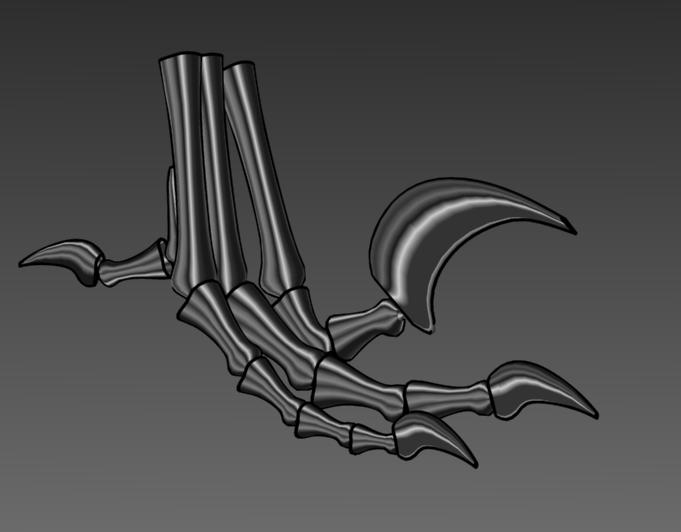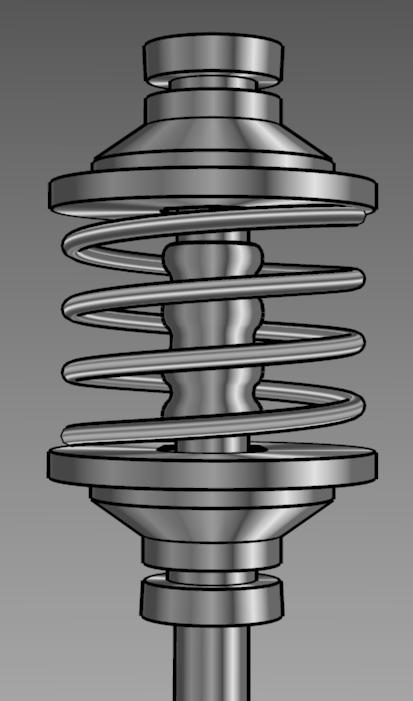
|

|
| Phong-shaded image. | Image with edge lines only. |
| Figure 6.1: Phong shading versus edge lines. | |
Many computer-generated images have to be hand-tuned and they still convey shape poorly. The goal of my research was to use the techniques explored by illustrators for centuries to automatically generate images like technical illustrations and to be able to interact with these illustrations in three dimensions.
As seen in Figure 6.1(a), Phong-shaded 3D imagery does not provide geometric information of the same richness as human-drawn technical illustrations. In this thesis, I have reviewed some conventions to create computer-generated images and interaction which imitates colored technical illustrations. One of the most important characteristics of illustration is the use of lines to separate parts and to strengthen shape information, as seen in Figure 6.1(b).
As shown in Figure 6.2(b), putting together a low dynamic range shading which uses tones and undertones with edge lines results in an image that may convey more shape information than the traditional Phong-shaded approach, Figure 6.1(a). Using the illustration model presented in this thesis, one is no longer required to guess the best position for lights or to tweak the coefficients of the lighting model. In this thesis, I have also explored representing metal material properties, using a convention similar to that of most illustrators, as discussed in Section 4.2.3 and shown in Figure 6.3.


|
||
| Figure 6.3: These computer generated images were produced by using the illustration convention of alternating dark and light bands, to convey the metallic material property of the two images. The convention is rather effective, even for an object that may not naturally be metal. | ||
Since there are few examples of interactive 3D illustrations, there are not any conventions one has to follow. Adapting the shading and line conventions presented in Chapter 3 is straightforward as long as the line width conventions have frame-to-frame coherence. However, when interacting with 3D illustration one has to address the issue of whether to move the object or just change the viewer's position in model space. There are cases when one would want to move around a large object (changing the view), and conversely one may want to move a small object as if holding it (moving the object). This is directly related to whether the light moves or sticks to an object. It may be disorienting for the shading to change on a part as orientation of the part changes. However, the shading model presented in Section 3.2 is used to its full advantage if the surface varies completely from warm to cool. This would mean moving the object, not the viewpoint. However, when a manufacturer designs the hood of a car, they want to look at the way the appearance of the car changes as the light changes. Therefore, an interactive 3D illustration environment should consider the relative size of the object in order to control the motion of the viewer and the object, as well as the illumination source and allowing the user to control these options to maximize the amount of available shape information.